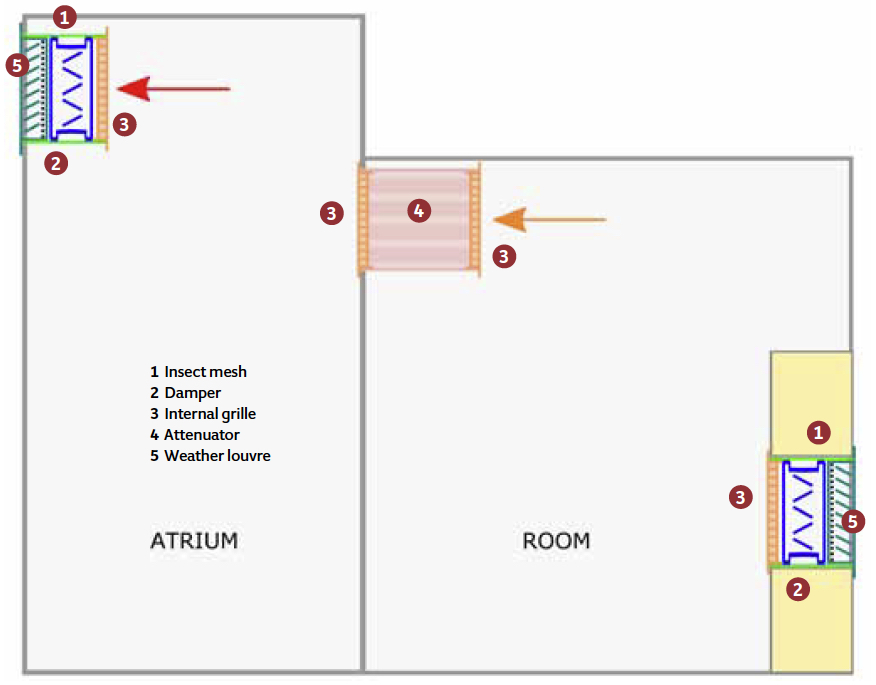It is right and proper that society demands higher quality buildings. By this, we mean buildings that provide more pleasant, stimulating environments – that people enjoy more and are easy to control.
Furthermore, buildings need to be more energy efficient, not only to meet the standards required by today’s legislation but, ideally, to go beyond that. Fortunately, the progress of technology makes it possible to create better buildings – and to do so for less money.
Improvements in technology affect everything in a building, from materials (structural, insulation, translucence) and methods of construction to building services systems and controls. As technology develops for one element of a building, the whole design may need to change in order to reap the benefits of it. For example, the advent of exposed thermally massive ceiling tiles means it is possible to achieve cooling in a building without relying on traditional chillers, while getting away with a structurally lightweight construction.
However, assessing the performance of a system within a building as a result of the development of one component is not easy – and the optimisation of a system, accounting for new building components, can be very hard. As a result, over the past 10 years we have seen more and more suppliers of building components evolving into building systems suppliers.
A consultant has to have the skills to critique the sub-systems being suggested by different suppliers
Consider a natural ventilation system, for example. Historically, a building services consultant may have devised a ventilation scheme and specified components to create the final solution. The same consultant will also have been given the task of designing numerous other sub-systems in the building. The problem is that optimising the ventilation solution alone is an onerous task – especially if there are multiple elements contributing to the overall performance.
One example is a room linked to an atrium, with components acting in series to create an overall system pressure for a given flow rate (see Figure 1). If we couple this with a thermally heavyweight building incorporating exposed phase change materials with non-linear heat capacity, then the optimisation of the system – if we are to minimise cost and achieve thermal comfort criteria in accordance with CIBSE TM52 – is non-trivial. It requires in-depth analysis of ventilation flows, assessment of the heat transfer between the exposed thermal mass and air, knowledge of the costs of the individual components – and how these vary with size – and an understanding of the expense associated with installing the different components.
The increased provision of design services by suppliers is not restricted to ventilation; lighting companies and providers of cooling systems have also extended their offering.
With lighting, a design does not simply constitute a manual switch and set of discrete light sources in a room. It involves: a detailed layout of sometimes diffuse lighting elements with specific intensity; zoned control within occupied areas that react to presence or absence of natural daylight and requirement for light; and an understanding of how light levels from the sources vary in time and space.
In the case of cooling systems, suppliers often undertake the detailed selection of in-room units, the roof-based system, the associated pipework, and the control process.

Figure 1: System pressure for a given flow rate in a room coupled to an atrium
As buildings become more intelligent and incorporate a nest of controlled sub-systems, it is virtually impossible for a single designer to draw up and optimise every component for every building. So the role of the building services consultant is becoming ever more strategic, rather than being focused on designing the minute details of the sub-systems.
The really important design decisions require a deep understanding of the interaction between the sub-systems in a building. For example, the heat gains emanating from new lighting and IT systems affect the ventilation, cooling and heating requirements of a building.
The strategic building services consultant is responsible for the specification of the sub-systems and, to do this successfully, they need to draw upon their understanding of the interactions between them.
Although the consultant does not typically design the details of all the sub-systems, it is critical that they are able to ensure that the designs of the various suppliers are robust. This means that a consultant has to have the skills to critique the sub-systems being suggested by different suppliers.
The requirements are not very different from a company that decides to outsource certain functions, usually because it is cheaper to do so. It is crucial that whoever is responsible for procuring the service from the outsourced provider is able to scrutinise what is being offered. So it is with building services consultants. More and more is being demanded of them in terms of skills and knowledge, and – in the new world – we are seeing the emergence of building services strategy consultants.
Shaun Fitzgerald FCIBSE is co-founder and CEO of Breathing Buildings
